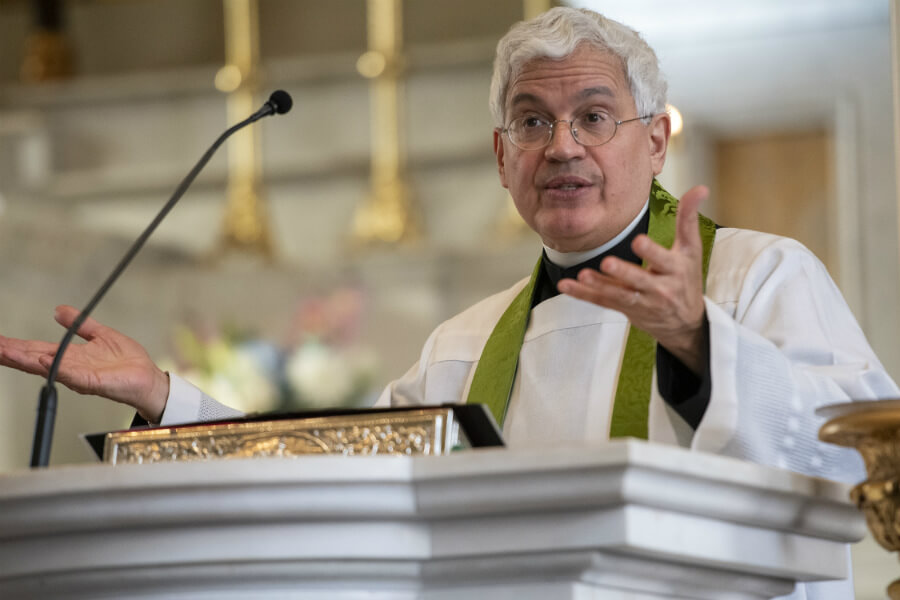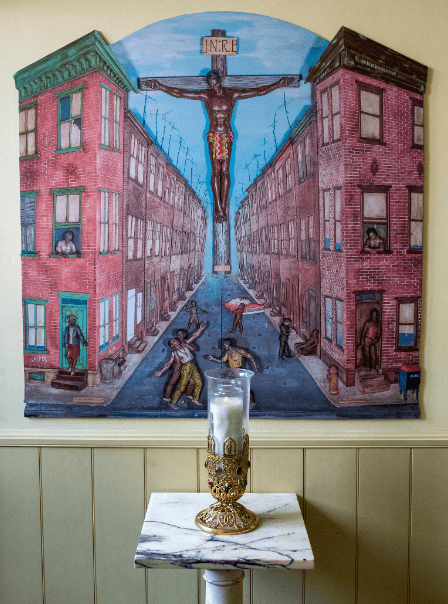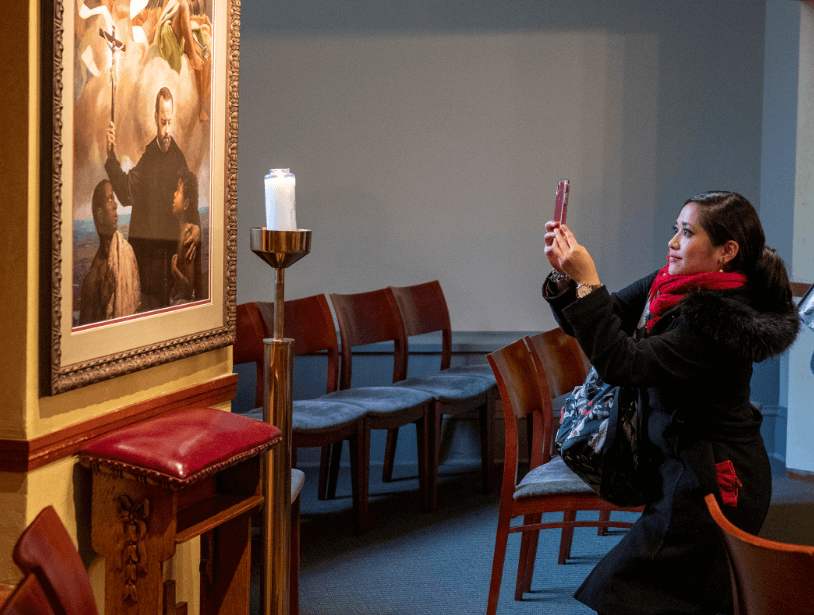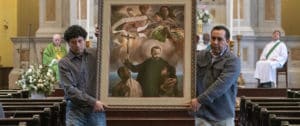
One day before the Martin Luther King Jr. holiday, St. Ignatius Parish on Calvert Street rededicated its basement Chapel of Grace as the Chapel of St. Peter Claver Jan. 19. According to the pastor, Jesuit Father James Casciotti, the ceremony symbolizes the parish’s dedication to racial justice.
He said the rededication was inspired by calls for racial justice by Catholic leaders, including Archbishop William E. Lori, who marked the MLK holiday in 2018 with his pastoral, “The Enduring Power of Dr. Martin Luther King Jr.’s Principles of Nonviolence,” and the U.S. Conference of Catholic Bishops’ “Open Wide Our Hearts: The Enduring Call to Love – A Pastoral Letter Against Racism” in the same year.
The rededication was part of a weekend of activities honoring Dr. King, including a Jan. 17 screening of the film “Selma” and a Jan. 18 retreat on non-violence.
“We take this step to confess and atone for the grave sin of racism that is part of the history of our parish community,” Father Casciotti said in a video statement to parishioners, viewable on the parish website.
“We were involved in segregation like the rest of the church and the city,” Father Casciotti told the Review.
Father Casciotti also noted that Jesuits were involved in ministry to black Catholics from their earliest days – service that has continued to this day.

He pointed, in particular, to Jesuit Father William Watters’ leadership in opening schools for marginalized children. Father Watters, the former pastor of St. Ignatius, helped found the Loyola Early Learning Center, St. Ignatius Loyola Academy, Cristo Rey Jesuit High School and is raising funds to open a Loyola School for elementary-age children.
The newly named chapel includes a portrait of St. Peter Claver, the patron of slaves, who called himself “a slave of the slaves.” It was blessed during the 10:30 a.m. Mass Jan. 19.
In blessing the portrait, Father Casciotti prayed, “Grant that, through his intercession, seeking the things of Jesus Christ, we may love our neighbor in deeds and in truth and labor tirelessly for racial justice and racial harmony in our beloved city of Baltimore, that all your people may be raised up to new hope and to the fullness of life.”
Father Casciotti spoke at all weekend Masses, explaining the history behind the name change.
In the 1600s, St. Peter Claver ministered in Cartagena, Colombia, bringing food, comfort and medical skills to some 10,000 Africans sold into slavery each year and advocating for their humane treatment. Canonized in 1888, he is the patron saint of African missions and interracial justice.
In 1857, a year after St. Ignatius Parish opened its doors, black Catholics, both free and enslaved, who were not allowed to attend Mass in the main church were invited to worship in the lower chapel. It became known as the Chapel of Blessed Peter Claver.

Among the chapel’s worshippers was Mother Mary Lange, who founded the Oblate Sisters of Providence in Baltimore in 1829 and died in 1882. Her canonization cause is ongoing.
Served by three Jesuits, the black congregation moved to its own parish, St. Francis Xavier, in 1863. Originally located in a former Universalist Church on the corner of Calvert and Pleasant Streets, according to St. Francis Xavier’s website, it’s now located on East Caroline Street and served by Josephite Fathers.
The chapel at St. Ignatius was renamed the Chapel of Grace, to honor the Novena of Grace, held every March and directed to the intercession of St. Francis Xavier. The novena was especially popular early in the 20th century, necessitating hourly Masses to accommodate the crowds.
“The church was packed,” Father Watters said. “Originally, the entire basement was the chapel.”
The chapel changed significantly to meet new needs. In the 1960s, the space was subdivided for offices and a kitchen and later for a ministry to homeless people, according to Father Watters. He was pastor in 2002-03, when the lower level was renovated to redesign a smaller chapel, a modern kitchen, art gallery, and Ignatian Hall, which honors longtime parishioner John Sharp.
The renaming of the chapel is a step toward deepening the parish’s commitment to interracial justice in Baltimore, Father Casciotti said in the video.
“Today the racial, cultural and social diversity of our parish is our great strength and a source of joy that welcomes all.”

